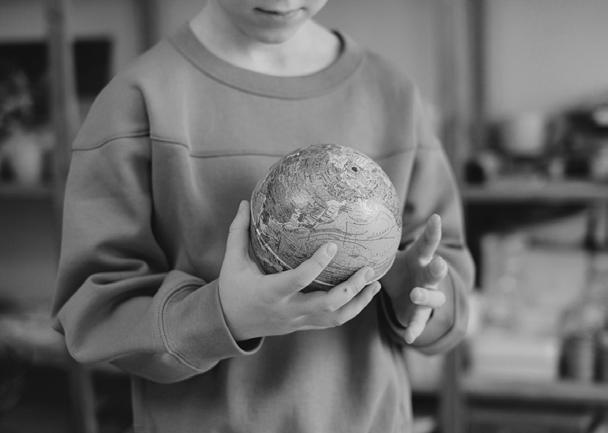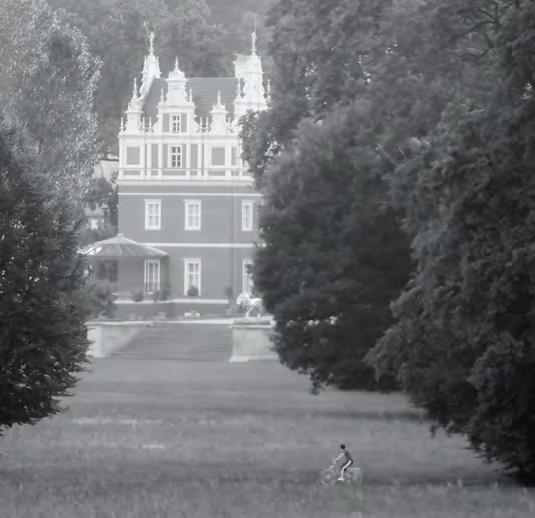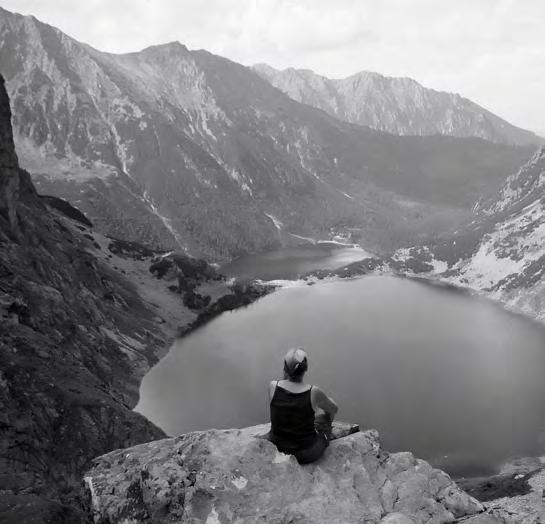
urope we share the


urope we share the
Living in Europe means not only sharing common values, lifestyle, heritage, education, and security but also being able to share them with others in need. It also means looking to the future together and facing global challenges hand in hand.







Poland has been actively shaping Europe’s history for over a thousand years. We share certain values that form the societies of all EU countries. Human dignity, freedom, democracy, equality, rule of law, human rights. These values ensure that inclusion, tolerance, justice and solidarity prevail.
In the 16th century, the Union of Lublin combined two of the continent’s largest states by territory – Poland and Lithuania – into a single Polish-Lithuanian Commonwealth, sharing a monarch, parliament, currency and foreign policy. In 1791, the Commonwealth’s Sejm, or parliament, overwhelmingly adopted a law now regarded a EUROPE’S FIRST WRITTEN CONSTITUTION.
But a century later, after two devastating world wars, European nations were ready to reconsider building their PEACE AND SECURITY on more resilient foundations, in the hope that it might prevent cycles of aggression and attempts to dominate other states that had marked previous eras.

Polish botanist Wojciech Bogumił Jastrzębowski went a step further in 1831, floating A PROPOSAL FOR A EUROPEAN COMMONWEALTH OF NATIONS, for which he drafted a constitution. At the time, the idea seemed hopelessly far-fetched, since Europe for centuries had resolved disputes and conflicts by force, with efforts for peace and stabilisation
In 1950, the French politician Robert Schuman presented a project for STRONGER COOPERATION BETWEEN EUROPEAN STATES, which would resolve conflicts through integration and mediation by shared supranational institutions rather than military means.

The Schuman Declaration paved the way for THE EUROPEAN UNION, a community based on peaceful cooperation and the shared values of democracy, freedom, solidarity, and the rule of law. Yet Poland and some other European states, trapped against their will in the Soviet sphere of influence, missed out on the early decades of post-war European integration. Mass opposition to the imposition of communist rule led to a series of protests against the regime, culminating in the emergence of the “Solidarity” trade union and social movement in 1980-81. Pressure from below eventually led to the restoration of democracy in 1989 – not just in Poland, but also in the other countries of Central and South-Eastern Europe. Finally Poland, Czechia, Estonia, Hungary, Latvia, Lithuania, Slovakia, Slovenia, joined also by Cyprus and Malta, entered the European Union on 1 MAY 2004.
One in three apples in Europe comes from Polish orchards. Poland is the 8th most attractive country for foreign direct investment in Europe.
(EY European Investment Monitor 2023)
The EU single market stimulates competition and trade, improves market efficiency, raises the quality of products and services, and contributes to lowering prices. For the last two decades Poland has been an active member of the European economy – both, taking advantage from its opportunities as well as contributing to its development.
No single member state of the European Union – not even the largest like Germany, France, Italy, Spain or Poland – could compete today with another global power on its own. BUT THE SINGLE MARKET HAS EFFECTIVELY TRANSFORMED THE EU ECONOMY, ALLOWING THE FREE MOVEMENT OF PEOPLE, GOODS, SERVICES AND CAPITAL. Tariffs were abolished, standards and requirements were harmonised, and freedom of movement was introduced, enabling entrepreneurs from various European countries to work together without constraint and allowing consumers to buy highquality products from anywhere in the EU. Globally, Europe’s single market is a one-of-a-kind model for economic and social cooperation, ensuring faster economic growth for all participating states.


As one of the EU’s largest economies, Poland reaps huge benefits from the single market. Its EU membership is estimated to have boosted economic output by an additional 2 to 2.5 percentage points per year, thus contributing more than half of the country’s cumulative GDP growth since 2003. Over the same period, POLAND’S GDP PER CAPITA HAS INCREASED FROM 49% TO ALMOST 80% of the EU27 average, mainly thanks to the country’s access to the single market and easy movement of goods, services, people and capital. Contrary to popular opinion, the infusion of EU funds has played a subsidiary role in economic growth, with the single market’s impact outweighing that of EU-funded investment and transfers by a factor of at least three.
Widely recognised Polish exports to the rest of Europe include cosmetics, textiles, buses and furniture, while Poland is also a leading global food producer, known for sweets, vegetables and fruit – especially apples, strawberries, and raspberries. Well-known Polish brands include: 4F (sports clothing), Black Red White and Forte (furniture), Fakro (windows), Inglot (cosmetics), Kross (bicycles), Orlen (fuels), and Solaris (buses).

The Human Development Index shows that as many as half of the ten best countries to live in are EU member states, with the benefits including security, a relatively high standard of living, a friendly environment, care for labour standards, and consumer protection.
In 2024, 77% of Polish respondents were in favour of Poland’s presence in the European Union 54% of respondents declared that they felt European, with European identity being secondary to national identity (CBOS Public Opinion Research Center, March 2024).
Naturally, access to goods and services differs between various regions, which is why the EU established a so-called cohesion policy aimed at gradually levelling out differences in living standards by improving conditions in poorer, less developed regions. The COHESION POLICY allows the EU to invest, among other things, in infrastructure such as road and rail networks and facilities to improve air and water quality. However, cohesion money also goes towards supporting SMEs, upgrading technology in key sectors, and reducing unemployment.

An example project supported by the Cohesion Fund is the construction of VIA BALTICA, A MOTORWAY LINKING THE BALTIC STATES WITH CENTRAL EUROPE. The EU is also funding construction of an “energy bridge” between the Polish and Lithuanian power grids, strengthening energy security in the whole region.

However, the cohesion policy also benefits wealthier countries, as it creates new business opportunities in the single market while promoting STABILITY AND SECURITY in their immediate neighbourhood.

Cohesion funds are available to member states whose GDP per capita is less than 90% of the EU average, which currently makes 15 countries eligible: Bulgaria, Croatia, Cyprus, Czechia, Estonia, Greece, Hungary, Latvia, Lithuania, Malta, POLAND, Portugal, Romania, Slovakia and Slovenia.

Education is the basis for personal fulfilment, employability, active and responsible citizenship. It is essential for the survival of European society and economy. Access to quality and inclusive education, training and lifelong learning is a right to which all citizens are entitled. Polish educational system and Polish students understand that above all.
Poland is an attractive destination in terms of both education and work. More and more foreigners want to come to Poland not only to spend holidays here but stay longer, get a job, do research or start a company.
Poland is an appealing destination for citizens of other EU countries, both for short tourist trips and for longer study- or work-related visits, encouraged by the country’s almost unbroken economic expansion over the past 20 years. IN 2024, POLAND’S UNEMPLOYMENT RATE WAS BELOW 3%, one of the lowest in Europe, while local businesses are actively recruiting workers for jobs in transport and logistics, construction, agriculture and catering services, along with physicians and IT specialists. Poland is also an appealing destination for students, as EU citizens can study under the same terms as Polish nationals. All public institutions of higher education offer guaranteed free tuition for students with the best exam results.


Other options include student exchanges such as the EU’s popular Erasmus+ programme. IN 2014-2020, POLAND HOSTED 87,000 ERASMUS STUDENTS, MAKING IT THE PROGRAMME’S SIXTH MOST POPULAR DESTINATION.
The most highly reputed educational institutions are the UNIVERSITY OF WARSAW and the JAGIELLONIAN UNIVERSITY in Kraków, although smaller hubs such as Lublin in eastern Poland, known for its large student population, also boast very good universities. Under-30 applicants who would like to gain practical experience while getting to know Poland better can also join the European Solidarity Corps, which recruits volunteers for work at a civil society organisations and NGOs. Among the sponsors of this initiative is the Polish Robert Schuman Foundation.

Every member state makes its own contribution to the EU’s cultural and natural heritage, and Poland’s 17 UNESCO World Heritage Sites testify to how much Poland has to offer in this regard to the European family.
Churches of Peace in Jawor Świdnicaand 2001
Muskauer Park 2004
Wooden Churches of Southern Małopolska 2003
Ancient and Primeval Beech Forests of the Carpathians and Other Regions of Europe
Wooden Tserkvas of the Carpathian Region in Poland and Ukraine 2013
Centennial Hall in Wrocław 2006
Tarnowskie Góry Lead-Silver-Zinc Mine and its Underground Water Management System 2017

Krzemionki Prehistoric Striped Flint Mining Region 2019


More photos & informatio about 17 UNESCO World Heritage Sites in Poland
Situated in the heart of Europe, Poland boasts a diverse landscape full of natural wonders.From beautiful sand beaches in the north, through pristine forests, lakes and rivers to majestic mountain ranges in the south.
WPoland’s most valuable habitats are now nature reserves, often within the EU’s Natura 2000 network of protected areas, established to preserve Europe’s most important local ecologies and threatened species. European bison, elk (moose) and lynx are among the unique Polish wildlife that benefit from this protection.

Central Poland is dotted with lakes and home to the BIAŁOWIEŻA FOREST, already mentioned above as Europe’s last primeval forest to survive in a nearly pristine state.
Poland is one of the few countries in Europe, where a number of natural bird habitats and dozens of rare bird species have been preserved to the present day. The rarest bird species include: WHITE-TAILED EAGLES, EAGLE OWLS , SHORT-EARED OWL, CORN CRAKES AND RUFFS. Natural scientists come to Poland from the entire European Union to watch the habits of the aquatic warbler –a small, endangered yellow-feathered bird.


The BALTIC SEA, with one of the highest concentrations of fresh water among the world’s oceans, washes against the country’s north coast, which is well worth visiting for its wide sandy beaches, beautiful dunes and seaside bluffs with breathtaking views.
To the south, Poland is bounded by mountain ranges, including the famous TATRAS, created by the same tectonic forces as the Alps and sharing their characteristic scenery of razor-sharp peaks and deep mountain lakes. But if it’s peace and quiet you’re after, then the gently rolling Low Beskids or the forested Bieszczady mountains might be more your speed. There, in late spring and early summer of southeastern Poland, the meadows are carpeted with colourful wildflowers and the lush green of the beech forests is out of a fairytale.
BIESZCZADY MOUNTAINS are one of the few places in Poland and Europe offering views of the starry sky undisturbed by artificial light. That is why south-eastern Poland has become a magnet for astronomy lovers.

The EU’s project should never be taken for granted. In the course of time, the European community has been facing numerous challenges. To be able to address them, all EU states have to stand together, open-mined and support not only each other but all those in need. Poland understands this concept very well and actively supports the assistance, enlargement and defence initiatives.
As the largest country in Central Europe, Poland works as a kind of bridge between the EU and its eastern neighbours. In 2008, Poland and Sweden initiated the Eastern Partnership program, officially established in 2009 and constituting one of the components of the European Neighbourhood Policy.
Belonging to the EU allows Poland to face GLOBAL CHALLENGES such as climate change and recurrent natural disasters not alone, but together with its fellow member states. In 2023-24, for example, many European countries suffered from flash floods as other regions struggled with drought. These challenges are transnational and their solutions need to be sought collectively, for example, by allocating EU funds for reconstruction of affected areas. Another example of successful transnational cooperation was the EU’s collective purchase of COVID-19 vaccines for equitable distribution among all European citizens.
STABILITY, PEACE AND EUROPEAN VALUES SHOULD NOT BE RESTRICTED TO CURRENT EU MEMBER STATES ONLY.
Europe also contains countries that have not yet joined the EU but would like to strengthen their ties with the community.
Poland supports these states’ aspirations, in part by sharing lessons learned on its own road to EU accession.


Given the current international situation, Poland is naturally focused on UKRAINE, having welcomed more than 1 million refugees from that country since the Russian invasion of February 2022. These were people looking for decent conditions and a safer place to live, which they found largely thanks to a voluntary mass mobilisation of Polish society and grassroots organisations. Based on these experiences, Poland is keen to strengthen its cooperation with other non-EU countries in Europe, including the WESTERN BALKAN STATES AND MOLDOVA, and supports candidate states in their ongoing accession negotiations.
